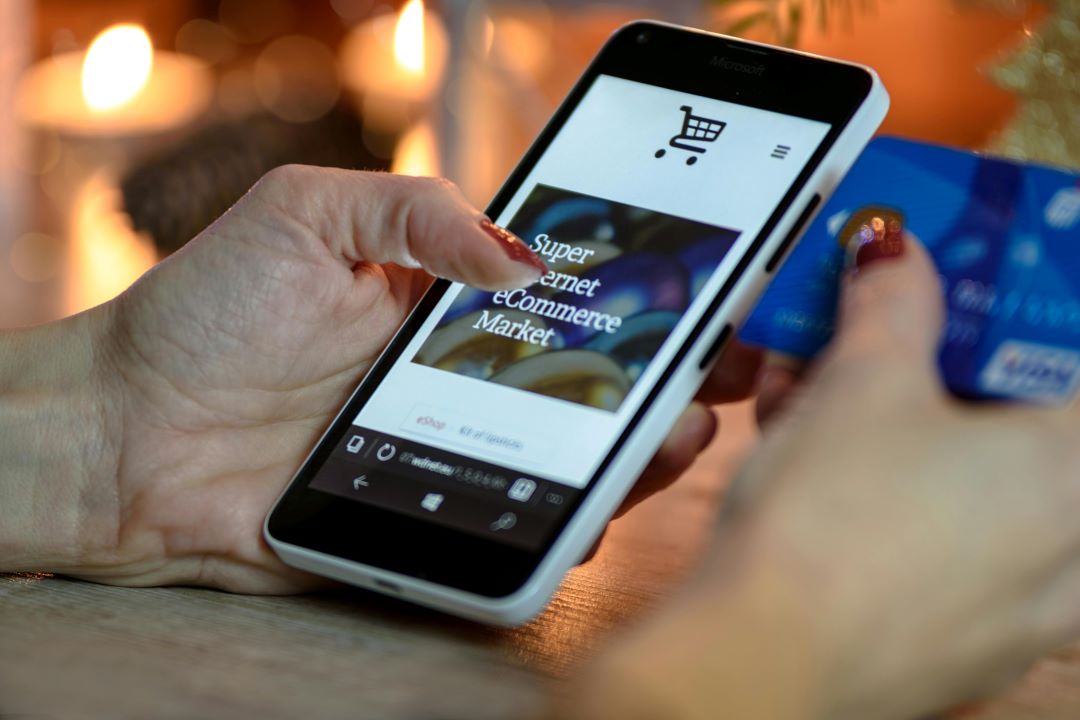Table of Contents
Imagine you have just launched your Shopify store with high thrill levels. The excitement of watching your dream come to life cannot be matched. You and your friends have spent thousands of hours choosing the products that you believe in and designing your online space with such care. It has not been easy work, but it was all for the good. You built the perfect brand story, made gorgeous graphics, and patiently filled your store with items that resonate in your target audience’s hearts.
Then comes the truth. You check your sales, and they don’t reflect your effort. When you see your heart sink, you realise the traffic isn’t translating into your anticipated sales. It’s a very frustrating reality many entrepreneurs face. You may feel overwhelmed, wondering if your marketing strategies are effective or if your product selection is correct.
It is quite easy to get lost in the vast and hurly-burly world of e-commerce, as competition is growing and trends are changing overnight. But here comes the pleasant news: hope is what exists. Optimising your Shopify store the right way is what can turn things around for the maximum ROI.
What have you done so far concerning improving your Shopify’s performance to get the results you deserve? Let’s dig into some effective strategies for optimising your Shopify store.
Improve Your UX
Indeed, first impressions are hard to ignore. And their scenario only makes it harder. A seamless UX can either make or break a deal. Here is how to improve your UX on Shopify:
Mobile-friendly design
Most online shopping takes place on mobile. Ensure your store looks great and is easy to use on a mobile device. You can apply responsive design techniques to change layouts and images automatically depending on the screen sizes. Try it across a few handsets so that the site will always display well.
Clear Navigation
Make it easy for your customers. Simplify the path to get what a person wants. A well-structured menu will get them there quickly. Organize products with sensible categories and subcategories. Throw in a search bar, preferably in an obvious place, so that users can find anything easily.
Fast page loading
Slow pages can also drive customers away. Optimise your web page’s speed so customers can stay engaged and satisfied. Compress images and minify CSS and JavaScript files so pages do not take too long to load. Tools such as Google PageSpeed Insights offer multiple methods to detect problems and improve further.
Good quality of product images
Displaying goods will improve significantly, including clear, high-resolution images, to allow customers to view what they are purchasing and hence give them a reason to trust the brand. Include pictures taken from various angles and let customers zoom in for more detail. Consider adding lifestyle images showing the product in real situations and what it would look like in a customer’s life.
Detailed product descriptions should be information-rich but still engaging so that customers clearly understand why they need the product. Use bullet points and tell a story that connects with your audience to make it easy for them to understand. Sometimes, include specifications, dimensions, and care instructions to head off questions.
Customer Reviews and Ratings
Include customer reviews and ratings on the product pages. Nothing quite like positive comments to give people trust in the product, besides social proof that can incite new visitors to buy. Ensure that, yes, users can actually leave reviews, and you respond to them to show that you appreciate the time given to you.
Live Chat Support
Include live chat support, through which users can get support in real-time. The foremost preference of more and more customers is immediate answers to any query that strikes their minds while browsing. It removes all friction from the buying process and raises customer satisfaction.
Easy Return Policy
Specify your return policy and keep it easily accessible. Such a return policy increases customers’ confidence in buying from your portal as the procedure of returning becomes hassle-free and very transparent. You should explain it so that customers can feel comfortable accepting returns without any hassle and thereby enhance your conversion rates.
Optimise for SEO
The company will benefit from online visibility. Let’s make sure the Shopify store is noticed:
Keyword Research
Find what keywords your customers need to find. Use tools like Google Keyword Planner or Ubersuggest to determine keyword opportunity, with a high volume search and less competition. It’s easy to optimally position your preferred keywords on your product’s title, description, and meta tags.
Include the target keyword on-page optimization for a product page, blog post, or other relevant content. This will add keywords in headings, alt text for embedding images, and internal links to boost visibility. Apart from getting a better rank for a webpage in the search engine, proper optimization will also increase visitors’ overall experience on that page.
Backlink Building
The best quality backlinks from good sources will help give credibility to your store and put your store under the searchers’ focus. Bloggers, influencers, and partner sites look for these targets for guest blogging. So, the more search rankings increase with reputable sites linking back to your site.
Local SEO
If you have a reallocation for this, optimise your store so that it will pop up in search results for local searches. This might allow you to attract people around you who need what you sell. Get your Google My Business listing and ensure all your contact information, including your address and hours of business, are current. Get satisfied customers to give reviews; positive reviews improve your rankings for local terms.
Utilize SEO Tools
Invest in Shopify SEO services and tools like SEMrush or Ahrefs to analyze your website’s performance. These tools help you and others understand keyword rankings, site audits, and competitor analysis and ensure you make the right decision to outpace the competition and stay ahead in the market.
Leverage Marketing Channels
Don’t wait for customers to find you. Use these channels to reach them directly:
Email Marketing
Build an email list and send targeted campaigns. This nurtures relationships and keeps your brand top-of-mind. Use segmentation to send personalised messages according to customer preferences and purchase history to increase engagement and conversion.

Social Media Marketing
Hold the content interesting and engage with your audience. It is very effective for creating community and driving traffic into stores. Paying ads on Facebook and Instagram helps reach more consumers and promote high-sales products.
Paid Advertisement
Use Google Adwords and Facebook Ad platforms to reach a wider audience. This will increase your visibility and sales. Use targeted campaigns based on demographics and interests to ensure you reach the right audience with your ads.
Content Marketing
Produce rich content to be published as blogs or videos. This will attract people to your website while also establishing you as an expert in this field. Publish tips, guides on how to do things, and product tutorials about how to use them, making them both a way to showcase your products and serve your audience.
Don’t Let Abandoned Carts Become an Issue
The checkout process may be one of the biggest culprits of cart abandonment. However, you can significantly lower abandonment rates by tweaking your checkout process. Here’s how you could make sure the customer experience is seamless:
Make the checkout process more streamlined: Ensure there are fewer steps to completing a sale. Now, wherever possible, try to make it a one-page checkout. Less is more, and extra steps can cause prospective customers to abandon their carts.
Multipayment options
Offer multiple payment options to address customers’ preferences. Accept credit and debit cards, digital wallets like PayPal and Apple Pay, and even buy-now-pay-later options. The more they have to pay for a specific product, the higher the chances that they will make this purchase and not move elsewhere.
Use a Secure Checkout
Secure checkout processes build trust and ensure that customers feel safe while making purchases. One should display security badges and certifications very clearly to reassure users that the company is concerned about protecting their information. Not only does honesty about how your data is safeguarded build confidence on the part of the customer, but this will also increase checkout usage.

Guest Checkout Option
Allow guests to check out, allowing them to buy without signing up for an account. Many customers appreciate this convenience as it reduces friction in the buying process. However, you are encouraging people to sign up after the purchase based on incentives offered to them, like lower prices or exclusive offers.
Progress Indicators
The checkout process should include progress indicators to let the client know how many steps remain. This will prevent expectations from getting ahead and keep users well-informed, thus eliminating anxiety in the buying process.
Autofill Features
When allowed for returning customers, autofill features fill in the fields, such as name, address, and payment information, making purchases easy and less time-consuming for them.
Transparent Return and Shipping Policies
Showcase return and shipping policies through checkout. This builds confidence in users and their purchase decisions, as they know what to expect if they buy something.
Abandoned Carts Follow-up. Send follow-up emails reminding customers of items in their carts that they have left behind. Include a call to action to complete the order, and consider including a small discount as well to encourage successful completion of the order.
Refining your checkout process with these approaches makes your Shopify store much more user-friendly and conversion-conducive. Simplistically, an optimised checkout experience allows customers to leave pleasantly satisfied, yet it also has a huge impact on your bottom line.
Analyse and optimise
Once your store goes live, the work is far from over. Constant analysis is necessary to ensure your strategy is always improved:
Keep track of key metrics, such as conversion rates, average order value, and customer lifetime value. This data will keep you on the right track, but it’s very specific in showing you where a store needs improvements. Google Analytics, as well as Shopify’s built-in analytics, is usually used to get a comprehensive view of a store’s performance.
A/B Testing
Try modifying the various parts of your site – headline, image, call-to-action buttons, etc. See what your audience likes and dislikes and adjust it accordingly. The insights it gives might be better for converting those visitors. Here’s the guide to help you more on this.
Customer Reviews
Collect customer reviews using surveys, reviews, or social media tools. The better you understand them, the better you can respond to their needs. You could try including a live chat or feedback form for this direct interaction.
Competitor Analysis
Monitor your competitors. Monitor their strategies to find the methods they employ that are helpful for you to adapt to your store. These can be at the pricing strategy, promotional offers, or anything unique for sale.
Regular Updates
Do this regularly because life does not stand still. Regular updating will keep you ahead of others in the digital world.
Hit the Road to Success for Your Shopify Store: Take Action Now!
Success doesn’t happen overnight; it is a continuous learning, testing, and refining process. By improving the user experience, enhancing SEO, using all marketing channels, optimising your checkout process, and keeping a constant eye on performance, you are not only driving traffic to your store but also building a brand that is relevant to your audience and fulfils their needs.
Each strategy you apply will strengthen your store and help convert visitors into loyal customers. Persistence and dedication will do the trick, turning those initial disappointments into victories and transforming your store into a thriving e-commerce powerhouse.
Are you ready for the next level in digital marketing? Join with Wonkrew. We are here to help you optimise your online presence for meaningful results. Let’s sit together and develop a well-rounded, individualised digital marketing strategy designed to meet your specific needs. Contact us today to discover how we can help make your Shopify store perform better!
FAQ
What are the key factors to optimise for better ROI on Shopify?
Focus on SEO, user experience (UX), and conversion optimisation (CRO). Improve site speed and navigation and optimise keywords to drive traffic and boost conversions.
How can I optimise my Shopify store’s speed and user experience?
Use a mobile-friendly design, compress images, and limit apps that slow down your site. Ensure fast load times and simple, intuitive navigation for a better UX.
What are some effective SEO strategies for Shopify stores?
Optimise with targeted keywords, improve on-page SEO, build backlinks, and focus on content marketing to enhance search rankings and attract organic traffic.
How can I leverage data to improve my Shopify marketing strategies?
Use tools like Google Analytics to track customer behaviour, run A/B tests, and adjust marketing strategies based on performance data for better results.
What are some effective tactics to build a strong brand presence on Shopify?
To build trust and a strong brand presence, create consistent messaging, use content marketing, engage on social media, and prioritise customer reviews.
How can I optimise my Shopify store for better conversions?
Simplify your checkout, offer multiple payment options, and use A/B testing to refine elements like CTAs and product pages for higher conversions.




